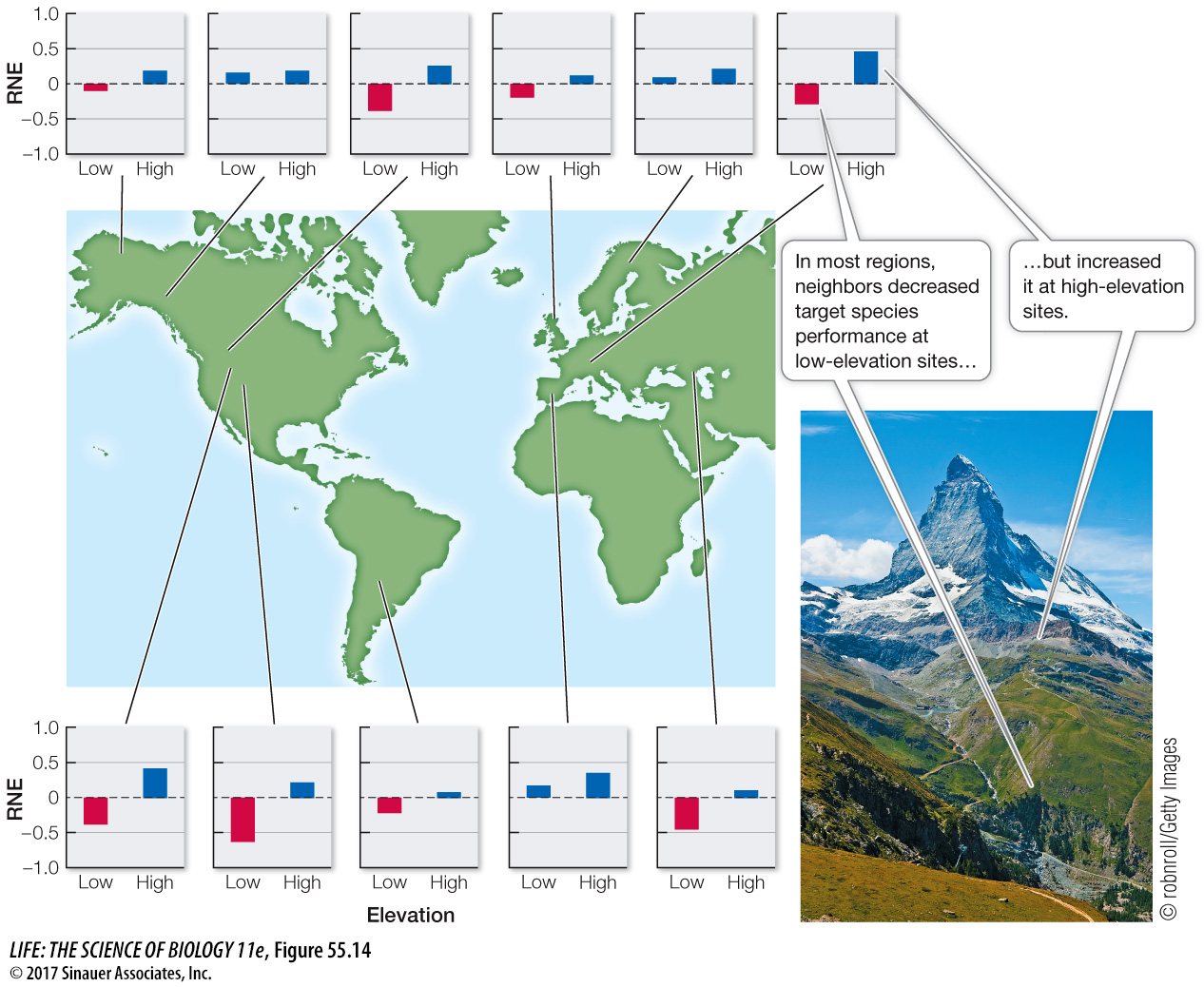Positive interactions are more common in stressful environments
It is clear from the previous examples that positive interactions arise out of net positive benefits accrued by one or more species involved in the interaction. Over the last two decades studies have repeatedly shown that positive interactions, be they mutualisms or commensalisms, are more likely to occur in stressful environments such as deserts, salt marshes, and alpine communities. In these environments, where physical conditions can limit fitness, some species provide benefits for those species that lack mechanisms to deal with the stressful conditions.
A comprehensive study conducted by Ray Callaway and an international group of ecologists testing for the influence of positive interactions in alpine plant communities around the world illustrates the benefits of these interactions in stressful environments (Figure 55.14). The experiment was conducted on 11 mountain ranges and involved either removing neighboring plants around target plants or keeping them in place as controls (in total, 115 plant species were used). The experiment was conducted at both high-mountain elevations where temperatures are lower and at low-mountain elevations where temperatures are higher. A year later, the relative effect of the neighbor on the growth of the target plants was measured. Researchers found that target plants benefitted from their plant neighbors at high elevations simply as a consequence of the thermal protection that living close together provides under cold temperatures. In contrast, target plants competed with neighboring plants at low elevations, where temperatures are moderate and the same dense plant growth resulted in competition. Whether the observed positive interactions were mutualisms or commensalisms is unknown because the effects of the target species on the neighboring plant species were not measured. Nonetheless, in this and other studies (e.g., see Figure 55.12) it is clear that positive interactions can arise under a variety of stressful conditions.

Figure 55.14 Positive Plant Interactions Are More Common at Higher Elevations The species interactions of alpine plants were experimentally measured (using the relative neighbor effect [RNE], defined as the growth of the target plant species with neighboring plants present minus its growth with neighboring plants removed) in 11 mountain ranges worldwide. RNE values greater than zero (in blue) indicate that neighbors increased the growth of target species; RNE values less than zero (in red) indicate that neighbors decreased the growth of target species. Plants generally benefited from neighbors at high elevations where temperatures were colder and competed with them at lower elevations where temperatures were warmer.
